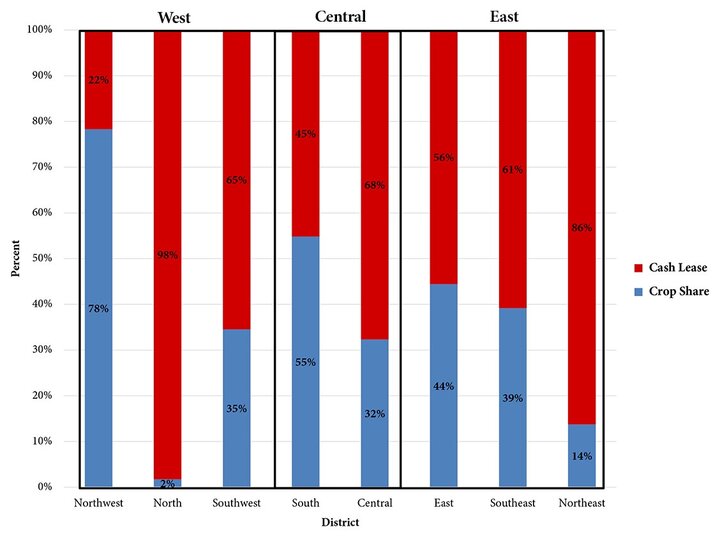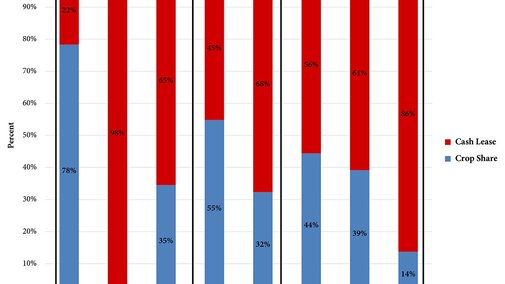In Nebraska, different types of rental arrangements are used on agricultural land. These arrangements commonly include crop share, cash lease, and cash lease with flexible provisions.

Crop Share: landowner receives a percentage of actual crop yield as payment for leasing the agricultural land to the tenant. The landowner may share input and production costs of raising the crop.
Cash Leases: landowner receives an agreed upon cash payment amount for leasing the agricultural land to the tenant.
Cash Lease with Flexible Provisions: landowner and tenant set a base cash rental rate which can flex upon actual crop yields, prices, or a combination of the two. The final cash payment made to the landlord for leasing the agricultural land to the tenant may have premiums or discounts made to the base rate depending upon the agreements set up by the two parties.
Crop and livestock producers across the state of Nebraska were surveyed in July 2016 regarding their farm financial health. Producers were asked questions related to the agricultural land these operations either owned, cash rented, or share leased over the prior five years. A total of 965 surveys were completed representing 1.14 million acres of agricultural land in Nebraska.
Producers were asked to provide the average annual acreage in their operation over the past five years that was irrigated cropland and dryland cropland. Within each category, producers specified the number of acres that were owned, cash rented, or share leased.
Survey responses indicated that, typically, 50% of the cropland acres on an operation are owned. The other 50% may be rented in either the form of cash leased or crop shared. The Northwest District reported the highest proportion of owned versus rented cropland acreage at 64%, while the Central District indicated the lowest percentage at only 42% of the acres owned by the operator.

